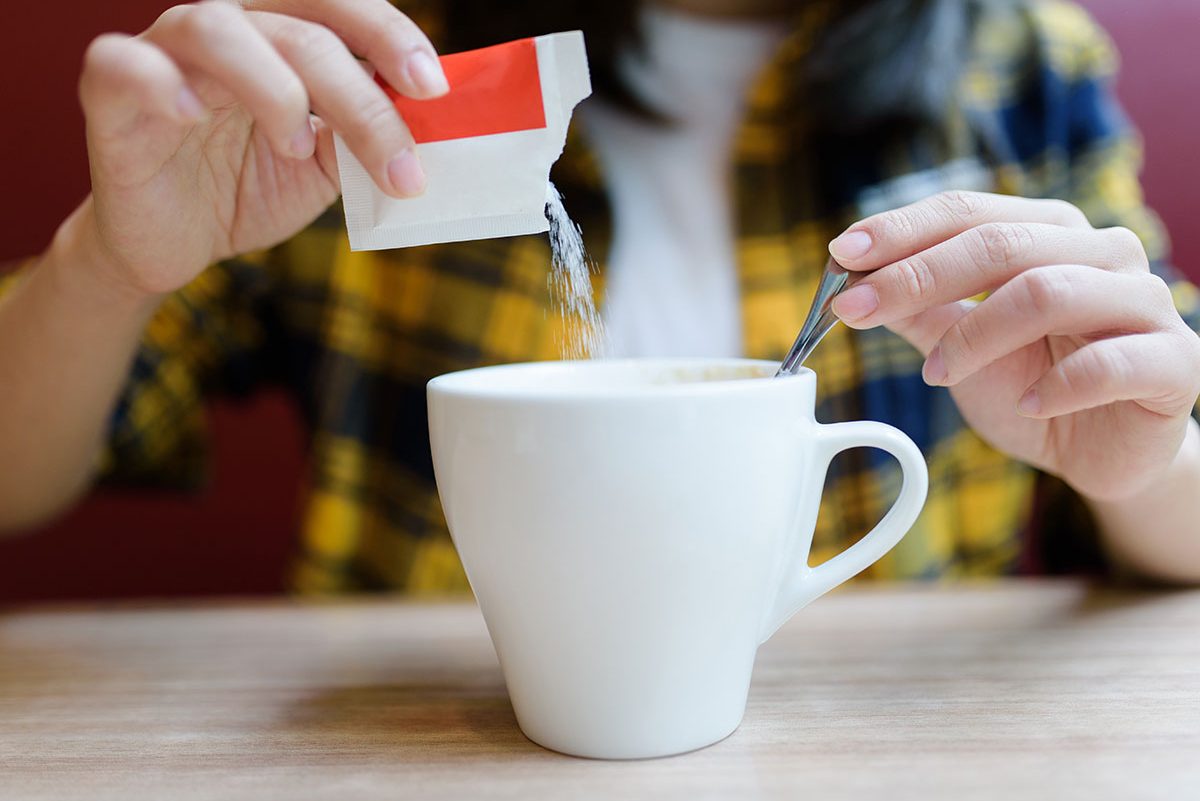Summary of What Is Sucralose? And Why It’s in Your Food — Eat This Not That:
Sucralose, also known as Splenda, is a zero-calorie sugar substitute used in “sugar-free” and “zero-calorie” foods and beverages. It is made by substituting three hydroxyl groups within the sugar molecule for three chlorine atoms, resulting in a super sweet, zero-calorie, powdered sweetener that is 600 times sweeter than table sugar. Sucralose is controversial due to studies suggesting it could possibly lead to metabolic disorders, negatively impact gut health, and contain genotoxic substances. The FDA has reviewed over 110 safety studies on sucralose, with none finding adverse effects, but recent studies and guidelines from various health organizations show potential impacts on health. Consuming sucralose may also affect insulin and glycemic responses, metabolism, and cravings. Alternative sweeteners may be considered when trying to satisfy a sweet tooth.
*****
Sucralose: What You Need to Know About This Controversial Sweetener
Sucralose, also known as Splenda, is an artificial sweetener that has been extensively used as a sugar substitute in a variety of food and beverage products. It was initially approved by the FDA in 1999 as a general-purpose sweetener and has since become popular among dieters and others looking for zero-calorie sweeteners.
However, recent research has raised concerns about the potential dangers associated with consuming sucralose. This has prompted many people to question whether this sweetener is worth using at all. In this article, we’ll take a closer look at sucralose, including its benefits, drawbacks, and potential health risks.
What is Sucralose?
Sucralose is a white, odorless, water-soluble artificial sweetener that is intensely sweet, almost 600 times sweeter than sugar. According to the FDA, it is exceptionally stable, which means that foods made with sucralose remain sweet under a wide range of conditions and temperatures. Thus, it is commonly used in “sugar-free” and “zero-calorie” foods and beverages, such as frozen desserts, canned fruits, condiments, salad dressings, chewing gum, baked goods, and beverages.
How is Sucralose Made?
Sucralose starts off as regular sugar and undergoes a patented manufacturing process that involves multiple steps. The process selectively substitutes three hydroxyl groups within the sugar molecule for three chlorine atoms. This molecular change results in the super sweet, zero-calorie, powdered sweetener we know as sucralose.
How Does the Human Body Process Sucralose?
Unlike regular sugar, the human body does not recognize the sucralose structure, so it is not stored or metabolized as such. Instead, sucralose is excreted in the feces, unchanged, and a small amount is absorbed and rapidly eliminated in the urine. However, some studies suggest that sucralose can remain in the body’s adipose (fat) tissue long after its excretion, affecting long-term health.
Why is Sucralose Controversial?
While the FDA has approved sucralose for consumption as a general-purpose sweetener, recent research has raised red flags. The 2015 study showed that increased sucralose consumption could lead to metabolic disorders. More recently, a study published in the Journal of Toxicology and Environmental Health found that sucralose contains a chemical that may break up the DNA of your cells that are exposed to this sweetener, making it what is known as a “genotoxic substance.”
Furthermore, recent research also shows that sucralose can negatively impact your gut health. The chemicals in this sweetener can damage the lining of your gut, making it more permeable and “leaky.” With these findings, some dietitians suggest avoiding sucralose altogether.
Does Sucralose Cause Weight Gain and Sugar Cravings?
Research on the relationship between artificial sweeteners and weight loss is still unresolved. Some studies found no link between low-calorie sweeteners and weight gain, while others have seen an interesting increase in brain activity supporting the neurological triggers responsible for food cravings and appetite. Additionally, the WHO released a new advisory pertaining to sucralose consumption relative to weight gain, claiming that these zero-calorie sweeteners likely won’t facilitate weight loss in any meaningful way.
It is said that artificial sweeteners can encourage sugar dependence and cravings solely because they taste sweet. While studies have shown that artificial sweeteners do not activate reward pathways as natural sweeteners do, the long-term effects of consuming artificial sweeteners on sugar cravings and dependence require more research.
Does Consuming Sucralose Affect Blood Sugar?
According to a study published in Diabetes Care, the blood sugar and insulin levels in obese people were raised when they consumed sucralose, indicating that sucralose may affect insulin and glycemic responses. However, more studies are needed to know the effects of sucralose on blood sugar.
Which Products Contain Sucralose?
Sucralose is found in many pre-packaged food and beverage products. These include diet sodas, chewing gum, sugar-free gelatin, salad dressings, maple syrup alternatives, flavored coffee syrups, barbecue sauces, sugar-free jams and fruit spreads, baked goods, sugar-free candy, frozen desserts, and condiments labeled “sugar-free” or “low-calorie.”
Conclusion
Sucralose is a controversial sweetener that can potentially affect insulin and glycemic responses, metabolism, and cravings. While some studies have found no link between sucralose and adverse health effects, more recent research suggests potential dangers associated with consuming sucralose. It is essential to remain aware of your sugar intake from all food sources, read labels, and seek alternative sweeteners when trying to satisfy your sweet tooth.


